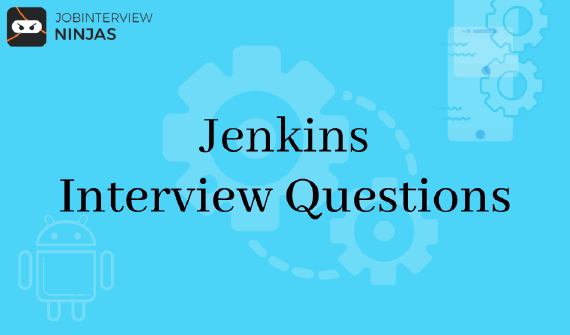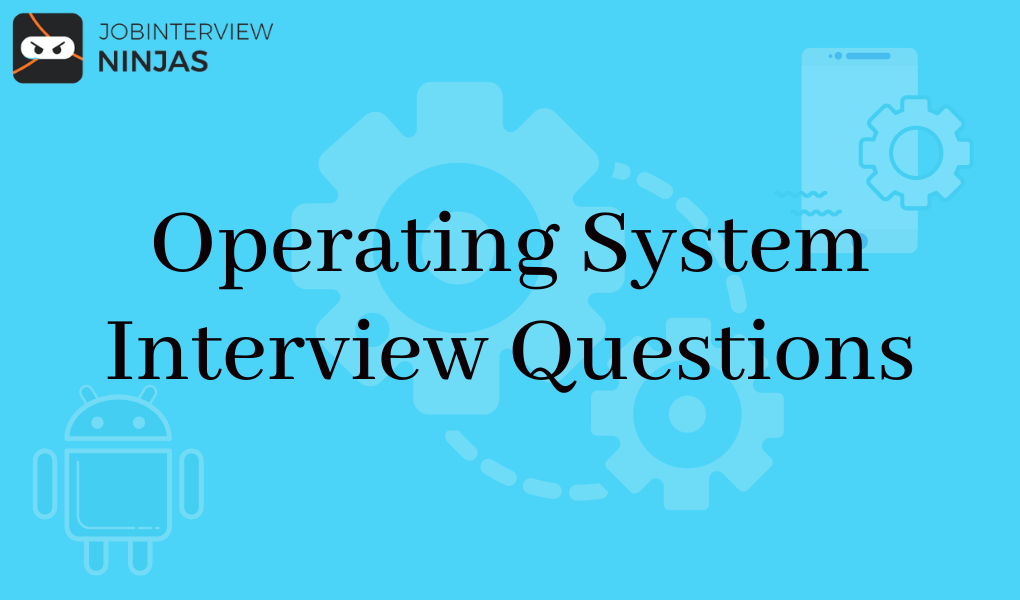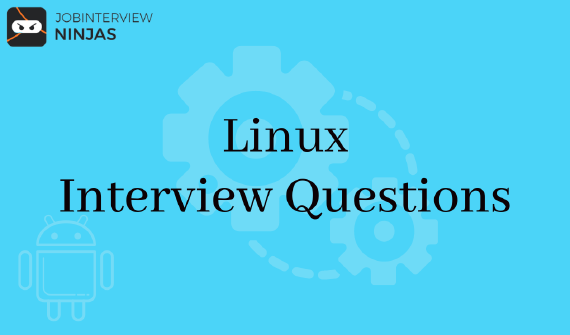
Top 40 Jenkins Interview Questions And Answers For Freshers/Experienced
If you are looking for a career in software development, then Jenkins is definitely worth exploring. This widely used …

Operating System is the topic on which the questions are asked in almost all the technical interviews. So for your benefit here we bring you Top 50+ OS interview questions and answers. Practice these operating system interview questions to crack the interview questions based on OS. Here we have tried to cover OS basic interview questions, OS concepts for interview questions, and all the technical Interview questions which can be asked during the interview.
About Operating System: Basically, Operating System is a software program that runs computer software and Hardware and is used in laptops, mobiles, tablets, etc. devices. Operating System responsibly manages, handles, and coordinates all the activities and sharing of computer resources. File management, running the process, managing the storage, etc are all under the control of OS
1. Why do you think the operating system is important?
2. What's the main role of an Operating System? Name different types of Operating systems?
3. Explain some benefits of a multiprocessor system?
6. What is a Pipe and its usage?
7. Explain different kinds of semaphore operations that are possible?
8. Explain bootstrap program in Operating system?
10. What do you understand by RTOS?
11. Explain process synchronization?
12. What is IPC and different IPC mechanisms?
13. Describe main memory and secondary memory.
14. What do you understand by overlays in OS?
15. Name 10 Operating Systems?
17. Define thread in the operating system?
18. Define the process and its different states?
19. What do you understand by FCFS?
21. What do you understand by Scheduling Algorithm?
22. Paging and segmentation how they are different from each other?
23. Explain the thrashing in the operating system?
24. What is the core purpose of multiprogramming?
25. What do you understand by asymmetric clustering?
26. Tell us the difference between multitasking and multiprocessing Operating systems?
27. What do you understand by Sockets in OS?
28. Explain the zombie process?
29. What do you understand by cascading termination?
30. Define starvation and aging in Operating System?
31. What do you understand by Semaphore in OS and its usage?
33. Name the different types of Kernel?
34. Tell us the difference between the microkernel and monolithic kernel?
35. Define SMP (Symmetric Multiprocessing)?
36. What is a time-sharing system?
37. What is Context Switching?
38. Tell us the difference between Kernel and OS?
39. Explain the difference between process and thread?
40. Describe various sections of the process?
41. What are a deadlock and the necessary conditions for a deadlock in the operating system?
42. What do you understand by Belady’s Anomaly?
44. Tell us some advantages of a multiprocessor system?
45. Explain four necessary conditions of the deadlock?
46. What is Banker's algorithm?
47. Tell us the between logical and physical address space?
49. Define types of fragmentation in OS?
50. Explain the Functions of Kernel?
1. Why do you think the operating system is important?
2. What's the main role of an Operating System? Name different types of Operating systems?
The main role of an Operating System is to perform user programs and easily make users understand and interact with computers and also run their applications. It is designed to make sure that computer performance improves by managing all computational activities. It overall manages computer memory, operation, function, and process of all hardware and software.
Types of OS:
3. Explain some benefits of a multiprocessor system?
It is a system that has two or more CPUs. It allows you to run the processing of different computer programs at the same time mostly by a computer system that has two or more CPUs that are using a single memory.
Benefits:
4. What do you understand by RAID structure in OS? Explain their different levels of RAID configuration?
RAID is called Redundant Arrays of Independent Disks helps you in storing data on multiple hard disks this is why it is considered as data storage virtualization technology that combines multiple hard disks and makes it a big storage device. It makes balance by managing data protection, system performance, storage space, etc. It improves overall performance and increases the reliability of data storage. By using multiple hard disks increases the storage capacity of the system and achieves data redundancy to prevent data loss.
Different levels of RAID Configuration
RAID 0 - Non-redundant striping: It increases the performance of the server.
RAID 1 - Mirroring and duplexing: It is also called disk mirroring and it implements fault tolerance.
RAID 2 - Memory-style error-correcting codes: It uses dedicated hamming code parity I.e., a liner form of error correction code.
RAID 3 - Bit-interleaved Parity: It uses a dedicated parity drive to store parity information.
RAID 4 - Block-interleaved Parity: It confines all parity data to a single drive.
RAID 5 - Block-interleaved distributed Parity: It gives better performance than disk mirroring and fault tolerance.
RAID 6 - P+Q Redundancy: It provides fault tolerance for two drive failures.
6. What is a Pipe and its usage?
7. Explain different kinds of semaphore operations that are possible?
8. Explain bootstrap program in Operating system?
10. What do you understand by RTOS?
RTOS stands for Real-Time Operating System (RTOS) is an OS that is used to run real-time applications i.e., those types of applications where data processing should be done instantly within a fixed and small measure of time. It is great in doing tasks that are needed to be executed within a short duration. Real-Time Operating System also takes care of execution, monitoring, and all-controlling processes, etc. all at once. It consumes less memory and fewer resources. It is used in Air traffic control systems, Anti-lock Brake Systems, and Heart pacemakers.
Types of RTOS:
11. Explain process synchronization?
12. What is IPC and different IPC mechanisms?
IPC (Inter-process Communication) is a mechanism that uses memory that is shared between processes or threads to make a communication. With IPC, Operating System allows different processes to communicate with each other. Its major purpose is to exchange data between multiple threads in more than one program or process.
Different IPC Mechanisms:
13. Describe main memory and secondary memory.
Main memory: The Main memory of a computer is RAM. It is the primary memory or read-write memory or internal memory of a system. The programs and data requires to run during the execution of a program are stored in this memory.
Secondary memory: Secondary memories are the additional memory in a computer, in the form of storage devices that can store data and programs. They are also known as external memory or backup memory or auxiliary memory. These storage devices are capable of saving high-volume data. Some Storage devices are hard drives, USB flash drives, CDs, etc.W
14. What do you understand by overlays in OS?
15. Name 10 Operating Systems?
17. Define thread in the operating system?
18. Define the process and its different states?
The process is a program that is currently running or executing. The main role of an OS is to coordinate and handle all of these processes. There are four divisions when a program is loaded into the memory and becomes a process, those four different states of the process are ─ stack, heap, text, and data. There are two types of processes:
The different States of Process:
19. What do you understand by FCFS?
21. What do you understand by Scheduling Algorithm?
22. Paging and segmentation how they are different from each other?
Paging: It is a technique of managing memory that permits the Operating system to retrieve processes from secondary to main memory. It is a non-contiguous allocation that divides each process in the form of pages.
Segmentation: It is a technique that divides processes into modules and parts of different sizes. The divided parts or modules are called segments that can be allocated to the process.
23. Explain the thrashing in the operating system?
24. What is the core purpose of multiprogramming?
25. What do you understand by asymmetric clustering?
26. Tell us the difference between multitasking and multiprocessing Operating systems?
Multitasking: It is a system that works more efficiently in the use of computer hardware. This helps the system to work on more than one task at once by quickly switching between various processes or tasks. It is also called a time-sharing system.
Multiprocessing: It is a system where multiple processors are used in a computer to operate two or more different portions of the same program at the same time. It completes more work in a short time.
27. What do you understand by Sockets in OS?
The socket in Operating System is the endpoint for IPC (Inter-process Communication). The endpoint is the combination of an IP address and port number. Sockets help software developers easily create network-enabled programs. It allows the exchange of information and communication between two different processes on the same or different machines. It is used in client-server-based systems.
Types of Sockets
The four types of sockets are:
28. Explain the zombie process?
29. What do you understand by cascading termination?
30. Define starvation and aging in Operating System?
Starvation: It is an issue that occurs when a process has not had sufficient resources it requires to proceed with its execution for a long period. In this case, low priority processes get stuck and blocked and process that has high priority proceed further towards completion and this is all because of lack of resources.
Aging: It is a solution or technique which helps in overcoming the problem of starvation. It prioritizes the processes that are in queue for resources for a long duration. It is the best technique to resolve the process issues of starvation and adds an aging factor to the priority of each request by various processes for resources. It also makes sure that low-level queue processes will complete their execution.
31. What do you understand by Semaphore in OS and its usage?
A semaphore is a mechanism that gives a signal. It only holds one positive integer value which is used to solve the problem or issue of important sections in the synchronization process by using two atomic operations i.e., wait() and signal().
Types of Semaphore
33. Name the different types of Kernel?
34. Tell us the difference between the microkernel and monolithic kernel?
MicroKernel: It is a minimal OS that only runs the important functions of Operating systems. It has a minimum number of features and functions that are required to be executed by OS. Some Examples are QNX, Mac OS X, K42, etc.
Monolithic Kernel: It is an OS structure that supports all basic features of a computer such as resource management, memory, file, etc. Some examples are Solaris, DOS, OpenVMS, Linux, etc.
35. Define SMP (Symmetric Multiprocessing)?
36. What is a time-sharing system?
37. What is Context Switching?
38. Tell us the difference between Kernel and OS?
Kernel: It is a system program that manages and controls all programs running on the computer or devices. It works as a bridge between the software and hardware of the computer system.
Operating System: It is a system program that performs or runs on the computer to give it an advanced user interface so it can easily operate the device.
39. Explain the difference between process and thread?
Process: A program that is currently running by one or more than one thread. It is an important part of the modern-day Operating system.
Thread: Thread is an execution path that is composed of a program counter, thread id, stack, and set of registers within the process.
40. Describe various sections of the process?
41. What are a deadlock and the necessary conditions for a deadlock in the operating system?
It is a situation where several processes are blocked as they are holding resources and waiting to consume more resources held by another process for smooth functioning. In this case, two or more processes try to run simultaneously and also wait for each other to finish their execution as they are dependent on each other. We can see the system starts hanging whenever a deadlock problem occurs in a program.
Necessary Conditions for Deadlock
The four necessary conditions for deadlock are:
42. What do you understand by Belady’s Anomaly?
44. Tell us some advantages of a multiprocessor system?
45. Explain four necessary conditions of the deadlock?
1) Mutual Exclusion Condition: It tells the resources used are non-sharable.
2) Hold and Wait Condition: It tells that there is a process running which is holding a resource and waiting for an additional resource that is currently being used or held by other processes.
3) No-Preemptive Condition: Resources cannot be shared or taken away while they are being used by processes in the execution.
4) Circular Wait Condition: It tells that the system processes make a circular list or a chain where every process in the chain is waiting for a resource that was held by the next process in the chain.
46. What is Banker's algorithm?
47. Tell us the between logical and physical address space?
49. Define types of fragmentation in OS?
50. Explain the Functions of Kernel?
Want to prepare for these languages:
Operating System is not a hard topic to cover and with good information, you can clear operating system interview questions. You can cover the above given operating system interview questions and answers to ace your OS interview questions. In the above section, we have tried to cover all questions related to the operating system which was asked in the Interview of freshers and professionals. If you have any questions or need help related to interview questions and answers on OS then feel free to reach us.

If you are looking for a career in software development, then Jenkins is definitely worth exploring. This widely used …

In this post, we will cover a few Linux interview questions and their answers. So, let’s get started. In this …